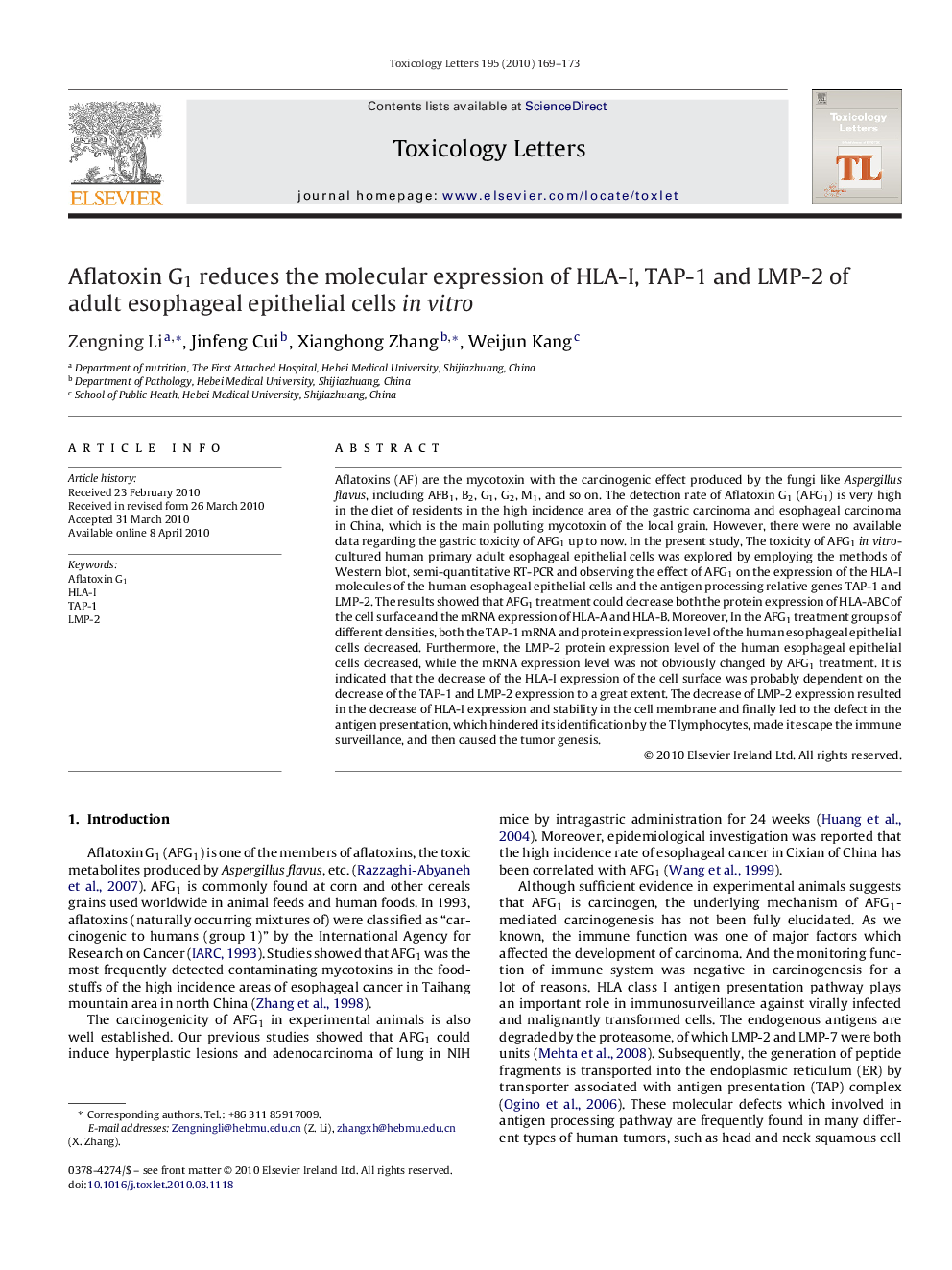| کد مقاله | کد نشریه | سال انتشار | مقاله انگلیسی | نسخه تمام متن |
|---|---|---|---|---|
| 2600090 | 1562640 | 2010 | 5 صفحه PDF | دانلود رایگان |
عنوان انگلیسی مقاله ISI
Aflatoxin G1 reduces the molecular expression of HLA-I, TAP-1 and LMP-2 of adult esophageal epithelial cells in vitro
دانلود مقاله + سفارش ترجمه
دانلود مقاله ISI انگلیسی
رایگان برای ایرانیان
کلمات کلیدی
موضوعات مرتبط
علوم زیستی و بیوفناوری
علوم محیط زیست
بهداشت، سم شناسی و جهش زایی
پیش نمایش صفحه اول مقاله

چکیده انگلیسی
Aflatoxins (AF) are the mycotoxin with the carcinogenic effect produced by the fungi like Aspergillus flavus, including AFB1, B2, G1, G2, M1, and so on. The detection rate of Aflatoxin G1 (AFG1) is very high in the diet of residents in the high incidence area of the gastric carcinoma and esophageal carcinoma in China, which is the main polluting mycotoxin of the local grain. However, there were no available data regarding the gastric toxicity of AFG1 up to now. In the present study, The toxicity of AFG1in vitro-cultured human primary adult esophageal epithelial cells was explored by employing the methods of Western blot, semi-quantitative RT-PCR and observing the effect of AFG1 on the expression of the HLA-I molecules of the human esophageal epithelial cells and the antigen processing relative genes TAP-1 and LMP-2. The results showed that AFG1 treatment could decrease both the protein expression of HLA-ABC of the cell surface and the mRNA expression of HLA-A and HLA-B. Moreover, In the AFG1 treatment groups of different densities, both the TAP-1 mRNA and protein expression level of the human esophageal epithelial cells decreased. Furthermore, the LMP-2 protein expression level of the human esophageal epithelial cells decreased, while the mRNA expression level was not obviously changed by AFG1 treatment. It is indicated that the decrease of the HLA-I expression of the cell surface was probably dependent on the decrease of the TAP-1 and LMP-2 expression to a great extent. The decrease of LMP-2 expression resulted in the decrease of HLA-I expression and stability in the cell membrane and finally led to the defect in the antigen presentation, which hindered its identification by the T lymphocytes, made it escape the immune surveillance, and then caused the tumor genesis.
ناشر
Database: Elsevier - ScienceDirect (ساینس دایرکت)
Journal: Toxicology Letters - Volume 195, Issues 2â3, 2 June 2010, Pages 169-173
Journal: Toxicology Letters - Volume 195, Issues 2â3, 2 June 2010, Pages 169-173
نویسندگان
Zengning Li, Jinfeng Cui, Xianghong Zhang, Weijun Kang,